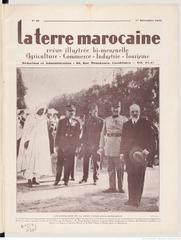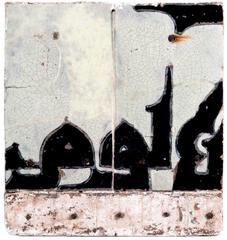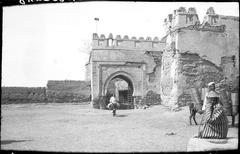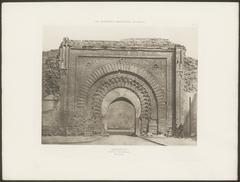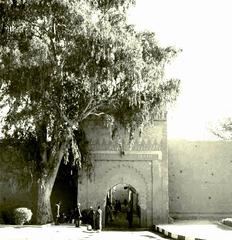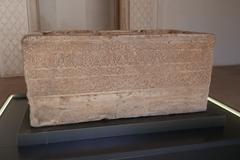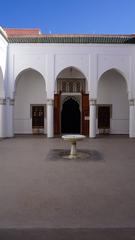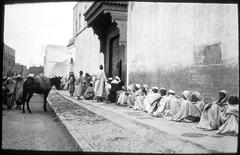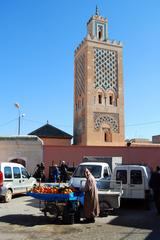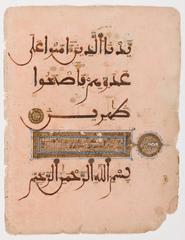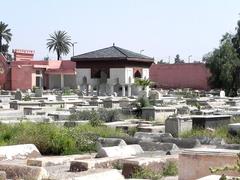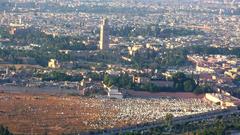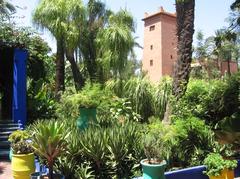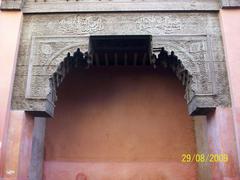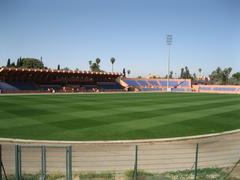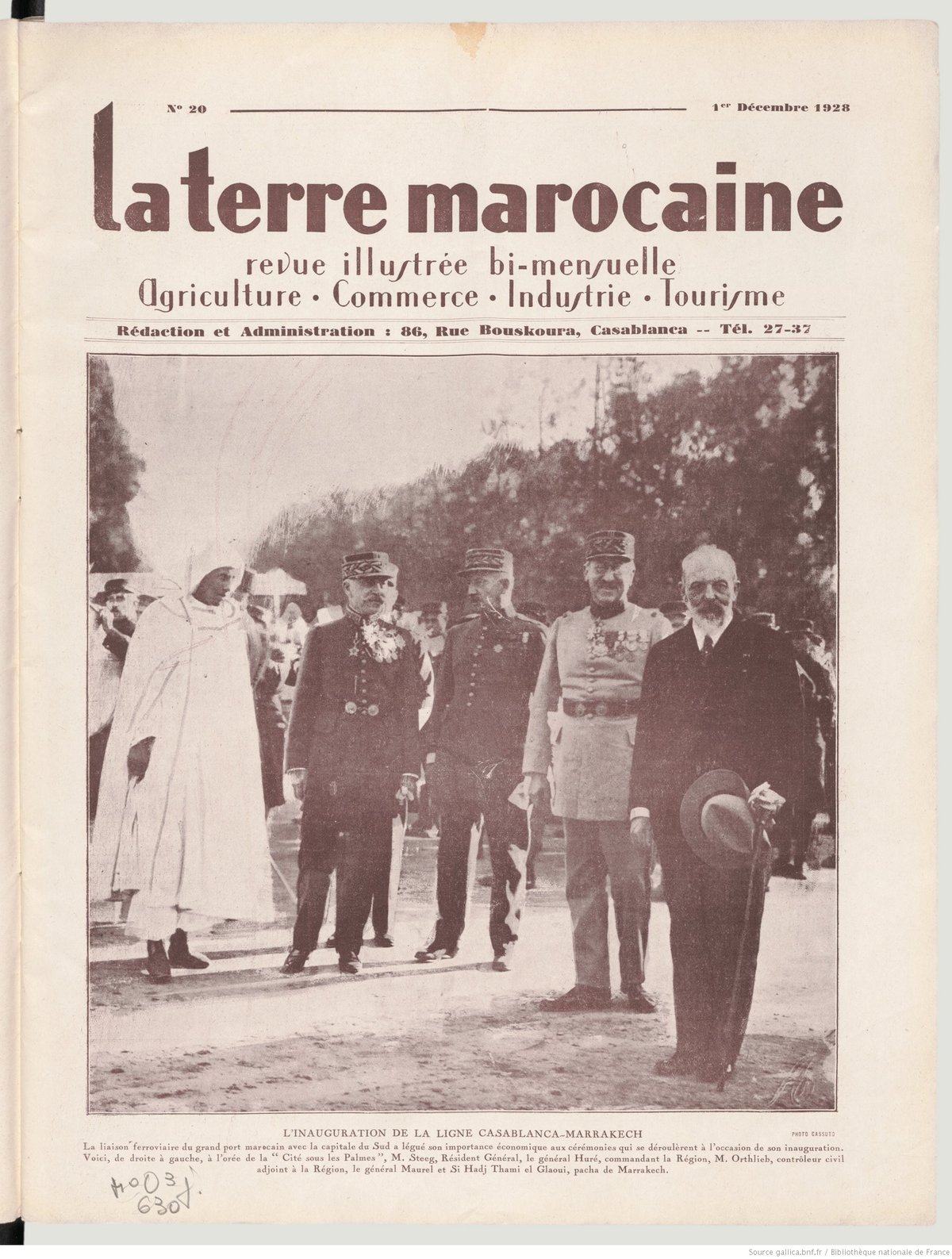
Marrakesh Railway Station Visiting Hours, Tickets, and Travel Guide
Date: 14/06/2025
Introduction: A Gateway Between Tradition and Modernity
Marrakesh Railway Station is far more than a point of arrival or departure—it is a living symbol of Morocco’s unique blend of heritage, progress, and hospitality. Situated at the crossroads of the city’s historic and modern districts, the station is a crucial hub for both local commuters and international travelers. Its design and function encapsulate Marrakesh’s journey from a colonial-era outpost to a modern, cosmopolitan city that still honors its vibrant cultural roots.
Originally constructed during the early 20th century under French Protectorate rule, the station was instrumental in integrating Marrakesh with Morocco’s northern economic centers. Since independence in 1956, successive upgrades—culminating in the 2008 inauguration of the current, architecturally ambitious structure—have transformed the station into an emblem of Moroccan ingenuity and openness. Its imposing arches, intricate geometric motifs, and seamless fusion of Islamic and Berber elements with glass and steel make it a must-see for architecture enthusiasts.
Today, Marrakesh Railway Station is not only the southern terminus of Morocco’s national rail network but also an expanding node for future high-speed rail connections. Its proximity to iconic attractions such as the UNESCO-listed medina, Jemaa el-Fnaa, Bahia Palace, and Majorelle Garden makes it the perfect starting point for any visit to Marrakesh.
For official schedules, ticket bookings, and architectural details, refer to the ONCF website and Archnet.
Table of Contents
- Early Foundations and Colonial Era
- Post-Independence Modernization
- Architectural Evolution and Design
- Visiting Hours and Ticket Information
- Tips for Travelers
- Accessibility and Facilities
- Nearby Attractions and Connectivity
- Integration into the National and High-Speed Rail Network
- Socio-Economic and Cultural Impact
- Ongoing and Future Developments
- Frequently Asked Questions (FAQ)
- Conclusion
Early Foundations and Colonial Era
The story of Marrakesh Railway Station begins during the French Protectorate, when Morocco’s first rail lines were established to connect the country’s interior with Atlantic ports. The original Marrakesh station—functional and modest—played a pivotal role in moving goods and people, helping to integrate the city into the burgeoning national economy. These early lines set the stage for Marrakesh’s development as a gateway between northern Morocco and the vast southern regions.
Post-Independence Modernization
After Morocco gained independence, the Office National des Chemins de Fer (ONCF) took over rail operations. With tourism and urbanization on the rise, the original station became inadequate. The need for a modern, welcoming transit hub led to the construction of the current station, which opened in 2008. This new facility was designed to handle increased passenger numbers and to reflect Marrakesh’s distinct cultural identity (Archnet).
Architectural Evolution and Design
The current Marrakesh Railway Station is a showcase of contemporary Moroccan architecture. Its façade features grand arches and geometric patterns that pay homage to traditional Islamic and Berber motifs, while expansive use of glass and steel infuses the building with a sense of openness and modernity. Inside, natural light floods the spacious hall, and the marble flooring, arcades, and sculpted columns reflect the city’s artistic legacy.
The station’s design is intentional: it aims to impress and welcome, signaling both continuity with the past and confidence in the future. These architectural choices make the station a destination in itself, frequently visited by travelers and photographers alike (3rd World Architecture).
Visiting Hours and Ticket Information
Opening Hours:
Marrakesh Railway Station is open daily from 6:00 AM to 11:00 PM, supporting early and late travel connections.
Ticketing:
Tickets can be purchased at staffed counters, automated machines, or online via the ONCF website and official mobile app. Prices vary by route, class, and train type. For example, a second-class ticket to Casablanca ranges from 100 to 150 MAD. Booking in advance is recommended, especially during holidays and festivals.
Combined Tickets:
For onward connections to places like Agadir and Essaouira, combined train and Supratours bus tickets are available.
Tips for Travelers
- Best Times to Travel: Early mornings and late afternoons are usually less crowded.
- Peak Hours: Expect higher foot traffic midday, weekends, and during public holidays.
- Advance Booking: Book online in advance for high-speed trains and popular routes.
- Luggage: Use the secure luggage storage facilities for convenience.
- Safety: The station is secure, but remain vigilant with personal items.
Accessibility and Facilities
Marrakesh Railway Station is designed to be accessible for all. Features include:
- Ramps and elevators for step-free access
- Accessible restrooms
- Multilingual signage (Arabic, French, English)
- Ticket offices, information desk, and electronic boards with real-time schedules
- Comfortable waiting lounges (air-conditioned for both classes)
- Free Wi-Fi, public telephones, and ATMs
- Shops and food outlets (local cafés and international chains)
- Secure luggage storage
Assistance for disabled travelers can be arranged in advance through ONCF customer service (Morocco Trains).
Nearby Attractions and Connectivity
The station’s location at Avenue Mohammed VI and Avenue Hassan II in Gueliz offers seamless access to both modern and historic Marrakesh:
- Medina of Marrakesh: A short taxi or bus ride; the heart of the old city and a UNESCO World Heritage site.
- Jemaa el-Fnaa Square: The bustling main square, alive with markets and street performers.
- Bahia Palace & Saadian Tombs: Historical landmarks within a 10-15 minute drive.
- Majorelle Garden: A tranquil, colorful garden popular with visitors.
Outside the station, taxis (fares negotiable), city buses, and Supratours coaches provide easy onward connections (Wise Visitor), (Along Dusty Roads).
Integration into the National and High-Speed Rail Network
Marrakesh Railway Station is pivotal in Morocco’s rail expansion plans. By 2030, high-speed TGV lines will link Marrakesh with Kenitra, Rabat, Casablanca, and Tangier, slashing travel times and boosting regional integration. Upgrades include new tracks, improved facilities, and a train maintenance center (Daily Guide Network).
Socio-Economic and Cultural Impact
The station not only enhances mobility but also stimulates local tourism, business, and employment. Recent expansions have introduced over 160 new trains, contributing to sustainable growth and reduced carbon emissions.
Ongoing and Future Developments
Plans are underway for further enhancements, including the high-speed rail extension and a metropolitan train service for Marrakesh. These projects aim to make the station even more accessible, efficient, and environmentally friendly (Daily Guide Network).
Frequently Asked Questions (FAQ)
Q: What are the station’s opening hours?
A: Daily from 6:00 AM to 11:00 PM.
Q: How do I buy tickets?
A: At the station counters, vending machines, or online via the ONCF website.
Q: Are facilities available for disabled travelers?
A: Yes, the station has ramps, elevators, and accessible restrooms.
Q: Are luggage storage services provided?
A: Yes, secure luggage storage is available.
Q: How do I reach the city’s main attractions?
A: The medina and Jemaa el-Fnaa are within walking distance or a short taxi/bus ride from the station.
Conclusion
Marrakesh Railway Station serves as an iconic entrance to a city famed for its beauty, history, and hospitality. Its modern amenities, accessible design, and strategic location make it an ideal starting point for exploring both Marrakesh and the broader wonders of Morocco. Whether you’re a first-time visitor or a seasoned traveler, using the station’s facilities and planning ahead—especially by booking tickets online and utilizing travel apps—will ensure a smooth, enriching experience.
For updated train schedules, ticketing, and travel tips, visit the ONCF website. Download the Audiala app for real-time updates, and check out our related articles on Top Attractions in Marrakesh and Guide to Moroccan Rail Travel.
References
- ONCF Official Website
- Archnet - Marrakesh Station Architecture
- 3rd World Architecture - Architectural Analysis
- Daily Guide Network - High-Speed Rail Expansion
- Wise Visitor - Marrakesh Train Station Guide
- Morocco.com - Train Station Information
- Along Dusty Roads - Morocco Travel Tips
- Morocco Trains - Facilities and Services
- Attract Travel - Ticketing and Visitor Tips
- Bewildered in Morocco - Essential Guide
- Visit Marrakech - Local Transport
